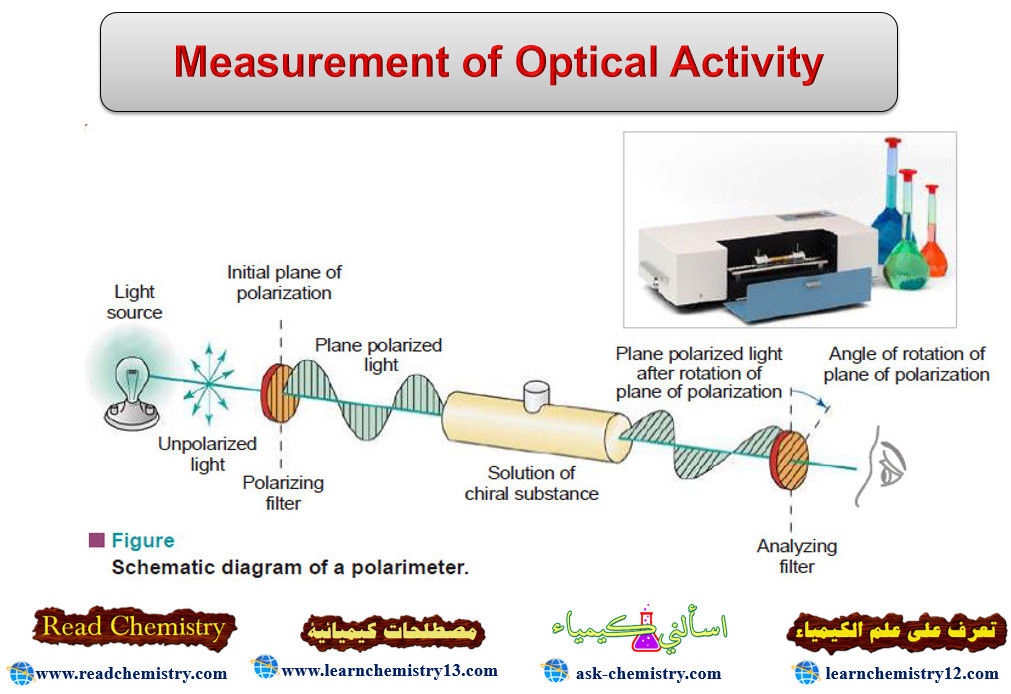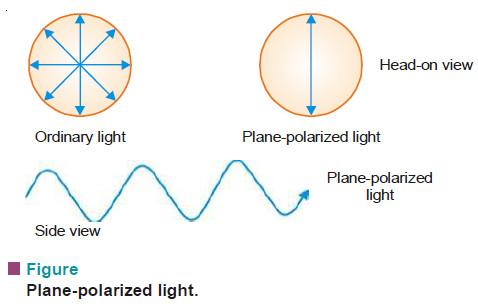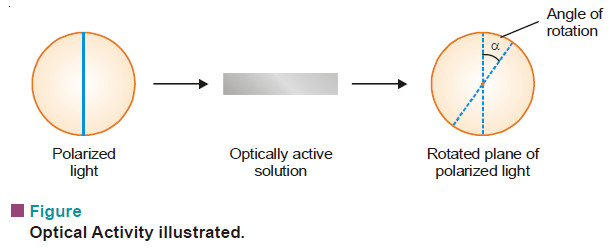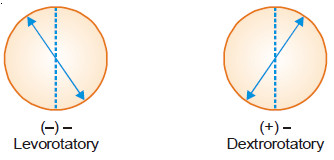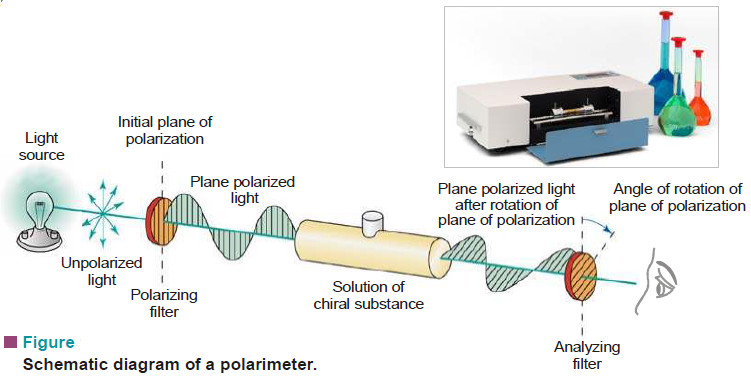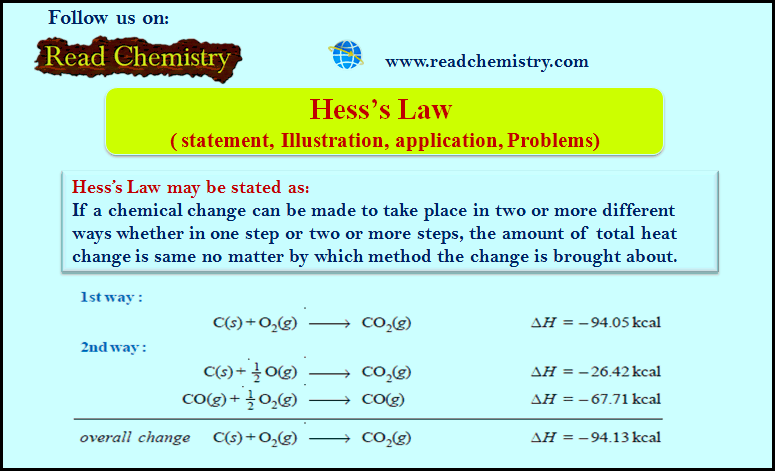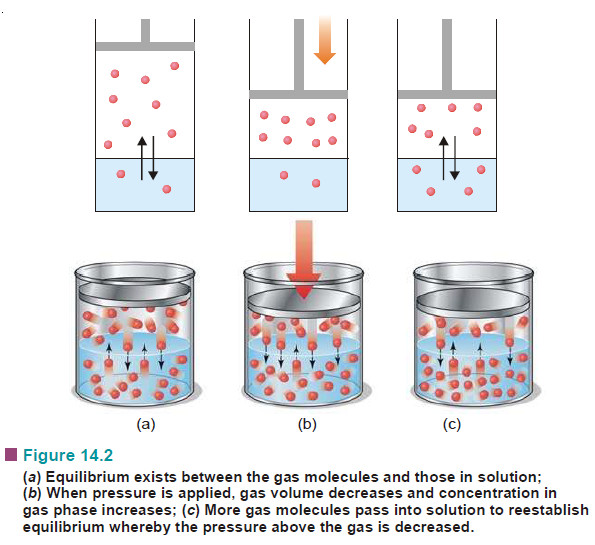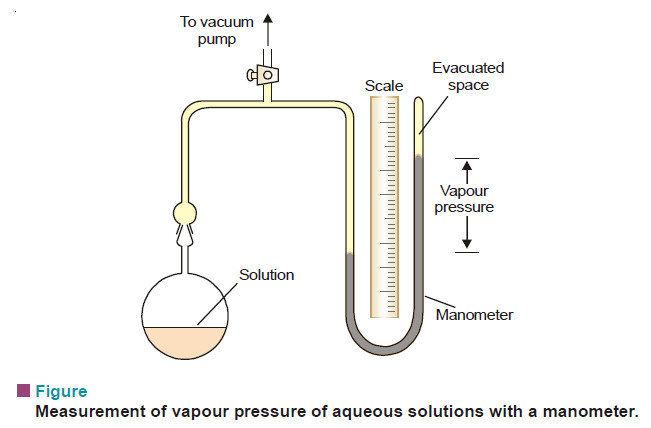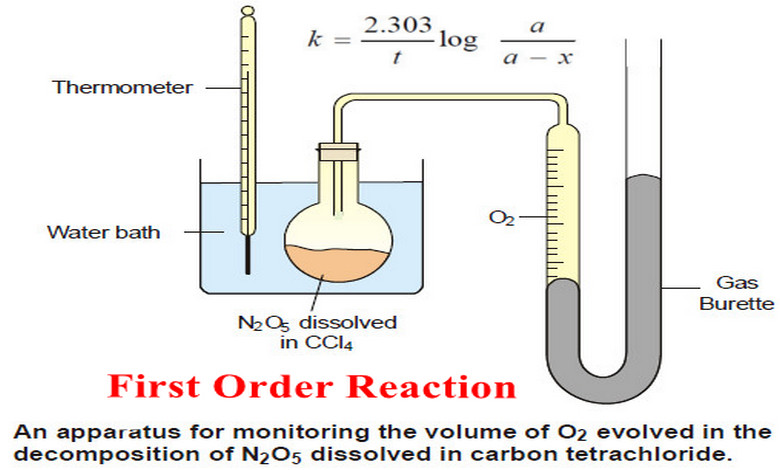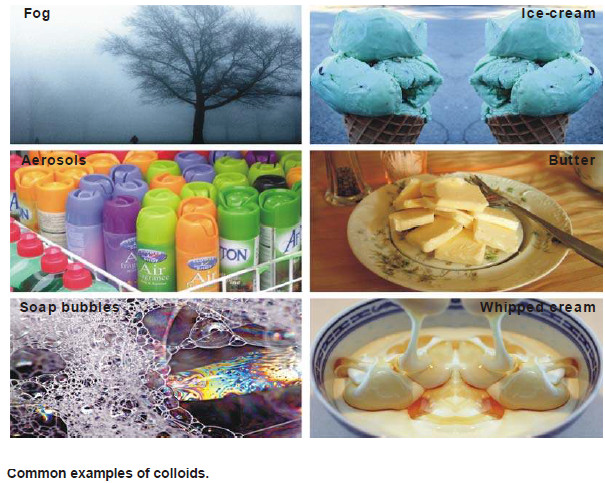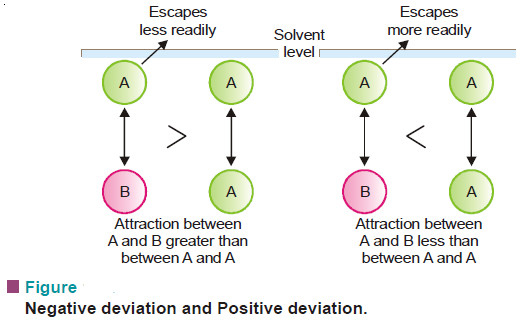Measurement of Optical Activity
Optical Activity
– Optical activity is one of imortant physcial properties of liqiuds
– A beam of ordinary light consists of electromagnetic waves oscillating in many planes.
– When passed through a polarizer (e.g., a Polaroid lens), only waves oscillating in a single plane pass through.
– The emerging beam of light having oscillations in a single plane is said to be planepolarized.
– When plane-polarized light is passed through certain organic compounds, the plane of polarized light is rotated.
– A compound that can rotate the plane of polarized light is called optically active. This property of a compound is called optical activity.
– A compound which rotates the plane-polarized light to the left (anticlockwise), is said to be levorotatory.
– A compound that rotates the plane-polarized light to the right (clockwise), is said to be dextrorotatory.
– By convention, rotation to the left is given a minus sign (–) and rotation to the right is given a plus sign (+).
– For example, (–)-lactic acid is levorotatory and (+)-lactic acid is dextrorotatory.
Specific Rotation
– The rotation of plane-polarized light is an intrinsic property of optically active molecules.
– When a polarized beam of light is passed through the solution of an optically active compound, its plane is rotated through an angle (α) (angle of rotation).
– This rotation depends on the number of optically active molecules encountered. Therefore, α is proportional to both the concentration and the length of the sample solution.
– The specific rotation which is characteristic of an optically active substance, is expressed as:
where:
[α] = specific rotation in degreesα = observed angle of rotation in degrees
l = length of the sample solution in decimeters (dm; 10 cm)
c = concentration of the sample solution in g/ml
– Thus fromthe previous equation, the specific rotation can be defined as the observed angle of rotation at a concentration of 1 g/ml and path length of 1 dm.
– Conventionally, a specific rotation is reported as [α]tD , where (t) stands for temperature and (D) for D-line of sodium used for determination.
Measurement of Optical Activity
– Optical activity is measured with the help of an instrument known as polarimeter .
– This is basically a system of polarizers with a sample tube placed in between.
– First, an optically inactive medium (air or solvent) fills the sample tubes and polarized sodium light emerging from the polarizer passes through it.
– The analyzer is then turned to establish a dark field. This gives a zero reading on the circular scale around the analyzer.
– Then the solution of the given optically active compound is placed in the sample tube.
– The plane of polarized light passing through it is rotated. The analyzer is turned to re-establish the dark field.
– The angle of rotation (α) is then noted in degrees on the circular scale.
– The specific rotation is calculated using the expression:

